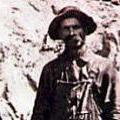 Beginning in the 1850s, the Eastern Townships were the centre of a massive "copper rush". One of the first copper mines in the area was in Leeds Township. Immense deposits were soon discovered in Acton, Bolton, and most important of all, Ascot, where rich concentrations of copper ore (and sulphur) were discovered in 1859. Within a couple of years, the American Civil War had erupted. The result was a huge demand in the United States for Canadian copper for use in the manufacture of armaments. Prices for the metal soared.
Beginning in the 1850s, the Eastern Townships were the centre of a massive "copper rush". One of the first copper mines in the area was in Leeds Township. Immense deposits were soon discovered in Acton, Bolton, and most important of all, Ascot, where rich concentrations of copper ore (and sulphur) were discovered in 1859. Within a couple of years, the American Civil War had erupted. The result was a huge demand in the United States for Canadian copper for use in the manufacture of armaments. Prices for the metal soared.
Albert and Capelton Mines, in Ascot, were opened in 1863, and a third (later called Eustis Mine) was opened nearby in 1865. Copper prices declined after the Civil War, but mining operations continued to grow in the Township, with several companies active in the area. In 1870, the Massawippi Valley Railway (later the Boston and Maine), was completed between the American border (Stanstead) and Lennoxville. The mining area, centered around the little hamlet of Capelton and located along the new line, was now linked by rail to the major markets in Canada and the U.S.
In 1879, a New York firm, C.H. Nichols, bought up a number of mines in the area. At Capelton, the company built a facility for treating the immense quantities of copper ore that were then being extracted in the mines. It soon added to its operations with a chemical, explosives, and fertilizer plant. In the 1890s, Eustis Mine (by then controlled by Boston interests) was producing a staggering 34,000 tons of ore per year. The nearby chemical plant was the largest in the British Empire.
A decline in the industry, however, was on the horizon. Capelton and Albert Mines were closed in 1907. The chemical plant burned to the ground in 1924. Finally, Eustis Mine, one of the deepest mines in the world, closed in 1939. The site was dormant until 1995, when Capelton Mines were re-opened to visitors as an interpretative centre for local industrial and mining heritage.